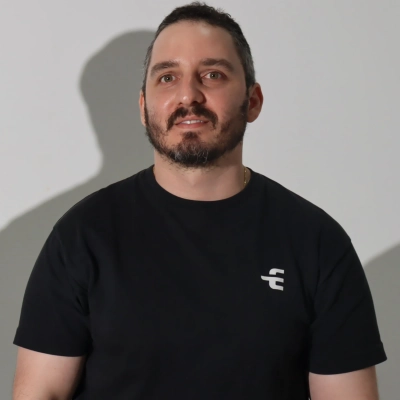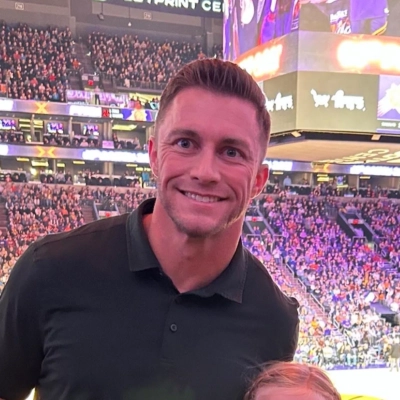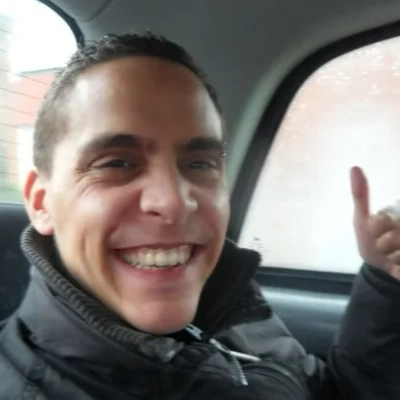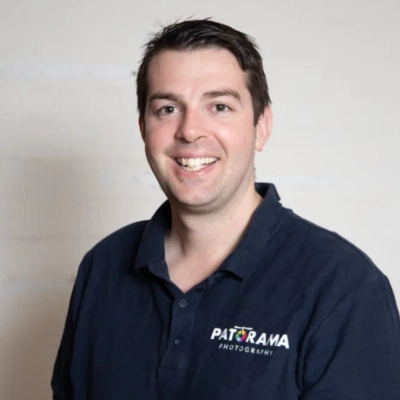24 Ways to Differentiate Your Advertising in a Crowded Market
Standing out in today's advertising environment requires innovative approaches backed by strategic thinking from industry experts. This comprehensive guide offers 24 practical techniques to differentiate your brand messaging and capture audience attention in competitive markets. From leveraging humor and relatability to tailoring messages for different customer adoption stages, these expert-backed strategies provide actionable solutions for marketers seeking meaningful differentiation.
Use Humor and Relatability to Stand Out
In Panama, most insurance brokers run very formal, conservative ads, clean visuals, professional tone, and pretty generic messaging. The problem is that in such a crowded and commoditized market, those ads all start to look and sound the same.
At Eprezto, we took a completely different route: we leaned into the local driving culture and created ads and social content that were funny, a bit edgy, and sometimes even meme-based. We weren't afraid to poke fun at the daily realities of driving in Panama, and people responded.
This approach immediately stood out because it felt authentic and relatable. It also lowered the barrier for engagement; instead of tuning out 'another insurance ad,' people watched, laughed, and shared.
The results spoke for themselves: our reach and engagement rates on platforms like Instagram were far higher than what traditional campaigns in our industry typically see. The key lesson here is that in a crowded space, tone and relatability can be as important as budget or placement, if not more so.

Start With Why Anyone Should Care
The best way I've found to stand out in a crowded market is to stop sounding like everyone else. While most brands rush to say more and say it louder, I've discovered that saying less but saying it better creates true differentiation.
Every campaign we run starts with one simple question: why should anyone care? Once we identify the genuine human truth behind our product or brand, everything else falls into place naturally.
One tactic that's consistently delivered results for us is what I call "story layering." Rather than pushing product features or making bold claims, we craft stories that connect three essential elements: our brand's core belief, our audience's everyday reality, and the emotional bridge between them. It's subtle, but this approach transforms advertising from background noise into something people actually remember.
In my experience, differentiation isn't just about creativity; it's about clarity. When your message authentically reflects how people think, not just what you want to sell, that's when it truly stands out in the marketplace.

Target Overlooked Niches Your Competitors Miss
We found success by taking a deliberate approach to competitor analysis, which helped us identify overlooked niches that others in our industry weren't adequately serving. Our team invested time in understanding these underserved segments and created targeted messaging that addressed their specific pain points. This strategy allowed us to stand out by speaking directly to customers who weren't getting attention from our competitors, ultimately expanding our customer base beyond traditional market segments.
Replace Fear With Curiosity and Education
In pest control marketing, most ads focus on fear — bugs, infestations, urgency. So instead of following that script, we leaned into curiosity and education with What Kind of Bug Is This. One tactic that worked surprisingly well was running ads that asked weird but real questions, like "Is this bug dangerous, or just ugly?" alongside an actual photo of a household bug.
It stood out because it felt like something a real person would say — not a sales pitch. We observed higher engagement and more extended site visits from people who clicked those ads. When your ad sounds like it came from your customer's brain, not your boardroom, that's when it cuts through.
Match Your Message to Customer Moments
The best way I've found to make advertising stand out in a crowded market is to stop competing for attention and start earning relevance. Most brands shout louder, add more visuals, or chase trends — but the real breakthrough happens when your message feels like it was made for one person at exactly the right moment.
One tactic that transformed our results was what I call "contextual storytelling." Instead of pushing one campaign across every platform, we built micro-narratives tailored to specific audience moments — not just demographics. For example, we stopped targeting "busy professionals" as a broad group and instead created distinct creative variations for people scrolling late at night, commuting, or comparing options during lunch breaks. Same message, different emotional entry points.
We paired this with real-time data signals — location, behavior, even time of day — to serve content that matched their mindset. One small change, but it changed everything. Engagement rates tripled because people didn't feel marketed to — they felt understood.
The key was restraint. We stripped back overproduced ads and replaced them with authentic, conversational tones — often featuring real customers, not models. The ads didn't look like ads, and that's why they worked.
The biggest lesson for me was this: in a world full of noise, clarity is the new creativity. When your message speaks directly to the moment your audience is living in, you don't have to fight for their attention — you already have it.
Position as Trusted Advisor Not Sales Channel
In a crowded IT market, it can be tempting to compete on price or product specs alone, but that rarely holds a customer's attention for long. As a value-added reseller, our differentiation comes from expertise and the personal connection we bring to every interaction. One tactic that has consistently helped us stand out is positioning ourselves as trusted advisors rather than just a sales channel. We invest the time to deeply understand a client's business challenges and then connect the dots between the right technologies and measurable outcomes.
That combination of technical depth and genuine relationship-building makes the advertising more than a message. It feels like the start of a conversation. In my experience, when customers see you as someone who can guide them through complexity, they remember you long after the noise of competing ads fades.
Choose a Name That Explains Your Value
One of the most effective ways we've differentiated our advertising was through strategic rebranding from "Terkel" to "Featured". This name change instantly communicated our core service of helping people and businesses get featured in publications, making our value proposition clear at first glance. In a market where customers have limited time and attention, having a descriptive brand name that quickly conveys what we do has been incredibly valuable. This simple but powerful change has helped us stand out from competitors and increased our market recognition significantly.
Tell Stories of Identity Over Product Features
Differentiation advertising needs to resonate with its target audience in a crowded marketplace; wonderful visuals alone are not enough. One key strategy we used in moving our message was to focus on the story of identity rather than product features. Instead of focusing on product features, we looked into the aspirations, challenges, and values of the target audience and created advertisements around those interests. For example, instead of presenting a service as "faster," we told a story of how the service was able to return precious moments to families, integrating the brand with the everyday lives of these families. This emotional shift moved the message from a transactional communication to one of relational trust. To back it up, we used the genuine voices of customers through testimonials and user-generated content to add to the credibility.

Answer Customer Questions With AI Video Content
In a market where everyone's shouting for attention, we've found success by using AI-generated video content that answers common customer questions directly. Our implementation of EZClone technology for personalized video messages completely transformed our engagement metrics, doubling our blog traffic and email click-through rates within a year. While others focus on following trends, we've established ourselves as thought leaders through consistent content creation and by literally writing the book on marketing - my fourth book "They're Looking For You" speaks to this philosophy.
Connect Immediate Rewards With Future Benefits
For me, the biggest differentiator has been keeping the message simple and grounded in what people care about most. On one hand, there's the instant cash factor, and on the other, the positive impact of keeping devices out of landfills. Instead of treating those as separate campaigns, we brought them together in a clear promise: you get rewarded today while doing something good for tomorrow. That dual value has cut through the noise in a crowded space.
Another tactic that's been effective is placing our message right at the point of decision. When someone is running errands and sees a kiosk nearby, the convenience clicks immediately. We're not asking them to remember an ad later or change their routine. They see the opportunity, take action in minutes, and walk away with both cash and peace of mind. That real-time connection is what's helped us stand out.
Create Micro-Videos Solving Specific Pain Points
We've found in high-traveling markets that the secret to differentiation lies in making a very specific pain point for the audience stand out and presenting it visually and emotionally.
One of the tactics that worked incredibly well was story-driven micro-videos on social media:
- Rather than conventional product demos, we created short, 10-15 second shots depicting one issue being solved with our app.
- Each video emphasized functionality benefits over features — e.g., showing someone instantaneously taking a still image and turning it into a dynamic video in seconds.
- By pairing this with robust, consistent brand and autoplay-captioned content that is optimized for silent autoplay, the content cut through feed noise and drove spikes in engagement and click-through.
Result: Our conversion rates increased by more than 25% on highly competitive audience-targeted campaigns since users instantaneously identified the relevance and worth of our solution.

Address Customer Fears Beyond Core Product
Understood.
Effectively differentiating our business in a crowded market isn't about having a complex strategy. It's about recognizing the client's biggest fear and advertising the solution to that fear. The one tactic that helped our message stand out was making our primary guarantee about cleanliness, not just the roof.
The core tactic we implemented was changing our entire advertising focus to "We Guarantee Zero Nails in Your Driveway." We realized clients were terrified of the mess and the constant risk of flat tires. By making a simple, non-roofing guarantee about the safety of their yard, we eliminated their biggest anxiety.
This commitment works because it proves we understand the client's perspective. Our advertising features a crew member sweeping the driveway with a large magnet—a simple, tangible symbol of professionalism. That final, perfect cleanup is the one thing clients consistently talk about and refer us for.
The key lesson is that in a crowded market, the small, human details are the biggest differentiator. My advice is to stop focusing on the technical quality of the product. Start advertising the elimination of the customer's anxiety, because the guarantee of a spotless yard is what wins the job.
Focus on Sensory Details Not Generic Claims
Focusing on sensory specificity made the biggest difference. Instead of generic claims about quality or innovation, our campaigns described tangible experiences—texture, weight, sound, and movement—that grounded abstract ideas in physical reality. For example, a product launch video emphasized the quiet click of a precision hinge and the shift in light across brushed metal rather than broad lifestyle imagery. That level of detail invited viewers to imagine direct interaction, which built credibility faster than slogans could. In a crowded market, audiences filter out familiar phrasing but respond to stimuli that feel observed rather than invented. The tactic worked because it replaced persuasion with presence, letting the sensory truth of the product define the message itself.

Make Real Customers Part of Your Advertising
We took a different route by making our customers part of the advertising itself. Instead of polished ads, we started featuring short clips and photos of real clients talking about their experiences—families, small businesses, even local restaurants we service. Authenticity beats production value every time. People tend to relate more to a neighbor who says, "They got rid of our scorpions for good," than to a generic slogan.
The key tactic was giving customers something in return for participating—like a free service upgrade or a donation to a local charity in their name. That small gesture encouraged honest feedback and created a ripple effect of trust. It transformed our advertising into a community conversation, moving beyond a one-way sales pitch.

Lead With Tension Before Offering Solutions
We stopped leading with features and started leading with tension. Instead of positioning our product as the solution, our ads began with the exact frustration customers felt before discovering it. That emotional entry point cut through generic claims because it mirrored their inner dialogue. For instance, one campaign opened with the line, "Tired of tools that promise clarity but create clutter?"—a question pulled directly from user interviews.
The tactic worked because it turned marketing into a mirror, not a megaphone. Competitors were shouting benefits; we reflected pain points. Click-through rates nearly doubled, and time spent on landing pages rose by 60 percent. More importantly, the tone of inbound messages changed—from curiosity to recognition. When people feel seen, they stop scrolling. That insight reshaped every campaign that followed.

Show Visual Proof Instead of Making Promises
We set ourselves apart by focusing on visual proof over promotion. Instead of running generic ads about trust or affordability, we began showcasing real inspection footage—thermal images, moisture readings, and before-and-after visuals from actual projects. Each ad told a small story about what we uncovered and how it protected the homeowner's investment. That transparency turned technical work into something relatable and reassuring. It also built credibility faster than any slogan could. The tactic worked because people trust what they can see. By highlighting the process rather than the promise, our message stood out in a field where most competitors relied on claims instead of evidence.

Emphasize Reliability With Verified Performance Data
Focusing on continuity rather than crisis set our advertising apart. While many competitors leaned on urgency during supply shortages, we highlighted reliability through verified delivery metrics and long-term partner testimonials. One campaign featured a simple figure—97.8% on-time fulfillment over twelve consecutive months—paired with a short statement from a regional hospital director. The message required no embellishment because the data spoke directly to what healthcare buyers value most: consistency under pressure. That approach replaced noise with evidence and positioned our brand as the calm, dependable choice in an industry often defined by disruption.

Build Community Through Local Knowledge and Service
In a crowded market like the HVAC industry, where competition is fierce and many companies offer similar services, carving out a unique identity is essential. At ALP Heating LTD., we've taken a multi-faceted approach to differentiate ourselves, but one of the most effective tactics has been our commitment to community engagement and personalized service.
As a family-owned and locally operated business, we prioritize building genuine relationships with our clients. We understand that HVAC services are not just about fixing or installing systems; they're about ensuring the comfort and safety of families and businesses in the Greater Toronto Area. By focusing on local climate challenges-like the humidity and ice storms that can affect our customers-we tailor our messaging to resonate deeply with our community. This local focus has allowed us to become a trusted name in areas like Maple and Newmarket, where we've established a reputation for reliability and expertise.
One standout tactic has been our ALPCare preventive maintenance program. By promoting this program, we emphasize the importance of routine maintenance in extending the lifespan of HVAC systems and preventing unexpected breakdowns. Through clear communication, we educate our customers on how regular check-ups can lead to significant energy savings and peace of mind. This not only positions us as experts but also reinforces our commitment to customer care-showing that we genuinely want to help our clients avoid costly repairs down the line.
Additionally, we leverage social media and our website to share real-life testimonials and case studies that illustrate our dedication to quality service. For instance, we often highlight stories of families we've helped through emergency repairs or successful installations, making our advertising relatable and impactful. This human touch sets us apart in a sea of generic advertisements.
In essence, our differentiation lies in our local expertise, community-oriented approach, and a genuine commitment to customer welfare. As I always say, "At ALP Heating, we're not just providing a service; we're part of the community." This philosophy guides all our strategies and allows us to stand out in a crowded marketplace, ensuring that our message resonates with those we serve.

Highlight Product Stories Through Relatable Moments
At oliviacroft.com, one way we've effectively stood out in a crowded market is by focusing on storytelling rather than just features or promotions. Instead of simply advertising a handbag or accessory, we highlight the story behind it—whether it's the sustainable materials, the craftsmanship, or the inspiration for the design. This makes the message more memorable and connects emotionally with our audience.
One tactic that's worked particularly well is using short, visually engaging video clips that show the product in real-life moments—people wearing it, styling it, or seeing the details up close. It's not flashy for the sake of being flashy; it's about creating a moment that feels relatable. The result has been higher engagement and click-through rates compared with standard product ads, and it's helped our brand carve out a distinctive, authentic voice in a competitive space.

Feature Real Community Impact Stories
We focused on storytelling rooted in real community impact instead of polished slogans. While competitors leaned on generic service claims, we highlighted local recovery stories—families back in their homes after storms, small businesses reopening after repairs. Featuring our actual crews and customers on camera turned every ad into proof of reliability rather than promotion. That authenticity built recognition faster than any paid campaign could. The tactic worked because it replaced persuasion with presence—people saw their own neighborhoods in our message and trusted it immediately.

Reframe Your Offer as Give Not Ask
One of the most effective ways I've differentiated advertising, both for my own agency and my clients, is by repositioning the offer as a give instead of an ask.
Take my agency, Gradari, for example. We specialize in lead generation advertising. For a long time, our call to action was the classic "Book a free strategy session." The problem is that In a crowded market, that reads as an ask for someone's time and they see it as a disguised sales call. Something every agency is already doing.
Recently, we flipped the positioning. Instead of asking for time, we invite prospects to apply for a free hour of advertising coaching, plus free access to our The Lead Gen Profit Audittm. My coaching rate is normally $250/hour, but the insights have driven hundreds of thousands, sometimes millions, in new revenue for past clients.
And the application isn't fake. If someone's not the right fit, they still get the assessment, just not the coaching session. We're also very clear that this first meeting is for coaching, and they'll have an opportunity to schedule a second call if they have a desire to work with us. The insights from the assessment also helps the free coaching hour be much more effective and valuable. This creates both genuine scarcity and perceived value.
Even though we haven't launched this full campaign for ourselves yet, every potential client I've shared this with said they'd be far more likely to take me up on the new offer. Our clients that have taken this approach have also seen an increase of conversions as well. The shift from a generic ask to a tangible give completely changes how your message is received.

Address Customer Frustrations Over Technical Advantages
In a crowded storage market, we cut through by focusing on flexibility rather than space. While competitors shouted about square meters, we highlighted the ease of loading at your own pace with mobile units. It wasn't the loudest message, but it resonated because it addressed a real customer frustration.

Make Advertising Hyperlocal for Instant Relevance
In crowded markets, the way we've cut through is by going hyperlocal with advertising. We use specific suburbs, landmarks, and local events. This makes the message feel like it's meant just for that community.
People don't scroll past an ad that mentions their neighbourhood. It creates instant relevance and trust. That's what makes the difference between being background noise and being remembered.

Tailor Messages to Each Adoption Curve Stage
In an overcrowded market, positioning becomes greatest differentiator — how audience perceives a brand determines everything.
What truly set us apart in the U.S. market was our creative strategy and message psychology. While most brands focused on listing product features, we flipped the script — every ad spoke directly to the pain points of the customer.
- Our ad copies weren't casual; they were emotionally calibrated.
- Our creatives weren't just pretty visuals; they were information-rich experiences.
We mapped our audience using the adoption curve like early adopters, early majority, late majority, and laggards, and tailored unique messaging for each stage. This helped us connect with the audience exactly where they were in their buying journey.
By blending psychological triggers with data-backed segmentation, we created ads that didn't just grab attention. They educated, built trust, and converted.
In short, we didn't just sell a product. We positioned a solution that resonated deeply enough to make people come back and buy.










